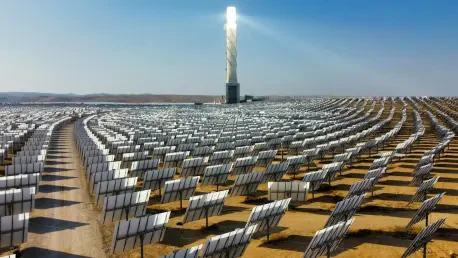In a groundbreaking move toward sustainable energy solutions, a leading science and innovation hub in the UK has embarked on a transformative journey to redefine how large-scale developments tackle energy challenges. Nestled in the heart of scientific advancement, Harwell Science and Innovation Campus, home to over 7,000 scientists and engineers across 250 organizations, has partnered with an energy infrastructure specialist to deploy a cutting-edge smart grid system. This initiative marks a historic milestone as the first commercial application of such technology on a UK science campus. With a £300 million ($404.4 million) expansion plan underway to triple its lab and manufacturing space, the campus faced significant hurdles in grid connection delays that could have stalled progress for over a decade. This pioneering effort not only addresses those barriers but also sets a new standard for energy management, promising faster growth while aligning with national decarbonization goals.
Breaking Ground with Innovative Energy Solutions
At the core of this ambitious project lies a partnership between Harwell Campus and an energy infrastructure company specializing in smart grid technology. The collaboration aims to circumvent the systemic delays that plague traditional grid connections, which often come with exorbitant costs and extended timelines. By integrating a smart grid, the campus can tap into unused capacity and manage energy demands with remarkable efficiency. This system stands out by storing excess solar power in communal batteries and utilizing AI-driven optimization to balance supply and demand. The result is a seamless energy network that supports the campus’s two million square foot expansion without the long wait times associated with conventional grid reinforcement. This approach offers a practical alternative, ensuring that critical research and manufacturing facilities can scale up operations swiftly while maintaining a focus on sustainability and innovation in energy infrastructure.
Beyond the technical advancements, the benefits for campus occupants are substantial and multifaceted. Energy costs are significantly reduced, with solar power priced at 35.6% below the UK average recorded in recent data, providing financial relief to the numerous organizations housed at Harwell. Additionally, the smart grid enables smarter allocation of capacity for flexible assets such as electric vehicle chargers, enhancing operational efficiency. The environmental impact is equally impressive, with projections estimating a reduction of 230 tons of CO₂e in emissions during the first year of full operation. This initiative not only addresses immediate energy needs but also positions the campus as a leader in low-carbon infrastructure. By prioritizing both economic and ecological advantages, the project demonstrates how innovative energy systems can drive progress in science and technology sectors while contributing to broader environmental goals across the region.
Transforming Challenges into Opportunities
The adoption of smart grid technology at Harwell Campus reflects a broader trend of leveraging advanced solutions to overcome entrenched obstacles in the UK’s energy landscape. Grid connection delays have long been recognized as a major barrier to national growth and decarbonization efforts, often hindering ambitious developments. This project serves as a compelling case study in how technology can bypass such limitations, offering a scalable model for other large-scale initiatives. Statements from campus leadership highlight the critical role of sustainable infrastructure in supporting cutting-edge research organizations. Similarly, the energy partner emphasizes the transformative potential of smart grids in delivering reliable, affordable, and low-carbon power. Together, these perspectives underscore a shared vision of redefining energy management to meet modern demands while aligning with environmental priorities.
Looking deeper into the implications, this initiative signals a shift toward integrating AI, onsite power generation, and long-term infrastructure investment as standard practices for future developments. The rollout, set to begin energizing buildings in November of this year and spanning the next five years, is poised to reshape how science campuses and industrial sectors approach energy constraints. Beyond immediate capacity needs, the system aligns with decarbonization objectives through its reliance on solar power and battery storage. The economic benefits for tenants are matched by contributions to the UK’s science and innovation economy, illustrating a dual focus on practicality and progress. As similar projects emerge in other regions, this model could inspire a wave of modernization in energy infrastructure, proving that systemic challenges can be transformed into opportunities for growth and sustainability with the right technological approach.
A Blueprint for Future Energy Management
Reflecting on the journey, the partnership at Harwell Campus carved a path through formidable grid challenges by embracing a smart grid system that balanced growth with environmental stewardship. The implementation tackled delays head-on, ensuring that expansion plans moved forward without the burden of decade-long waits or prohibitive costs. The integration of AI and renewable energy sources like solar power marked a significant step toward reducing carbon footprints while slashing energy expenses for campus occupants. This effort stood as a testament to what innovative collaboration achieved when addressing real-world infrastructure hurdles.
Moving forward, the success at Harwell offers actionable insights for other sectors grappling with similar energy constraints. The scalable nature of the smart grid model invites adoption by industrial and commercial hubs seeking to accelerate development sustainably. Policymakers and industry leaders might consider incentivizing such technologies to fast-track national decarbonization targets. As the project’s impact unfolds over the coming years, it could redefine energy strategies, paving the way for a future where efficiency and ecology go hand in hand.









